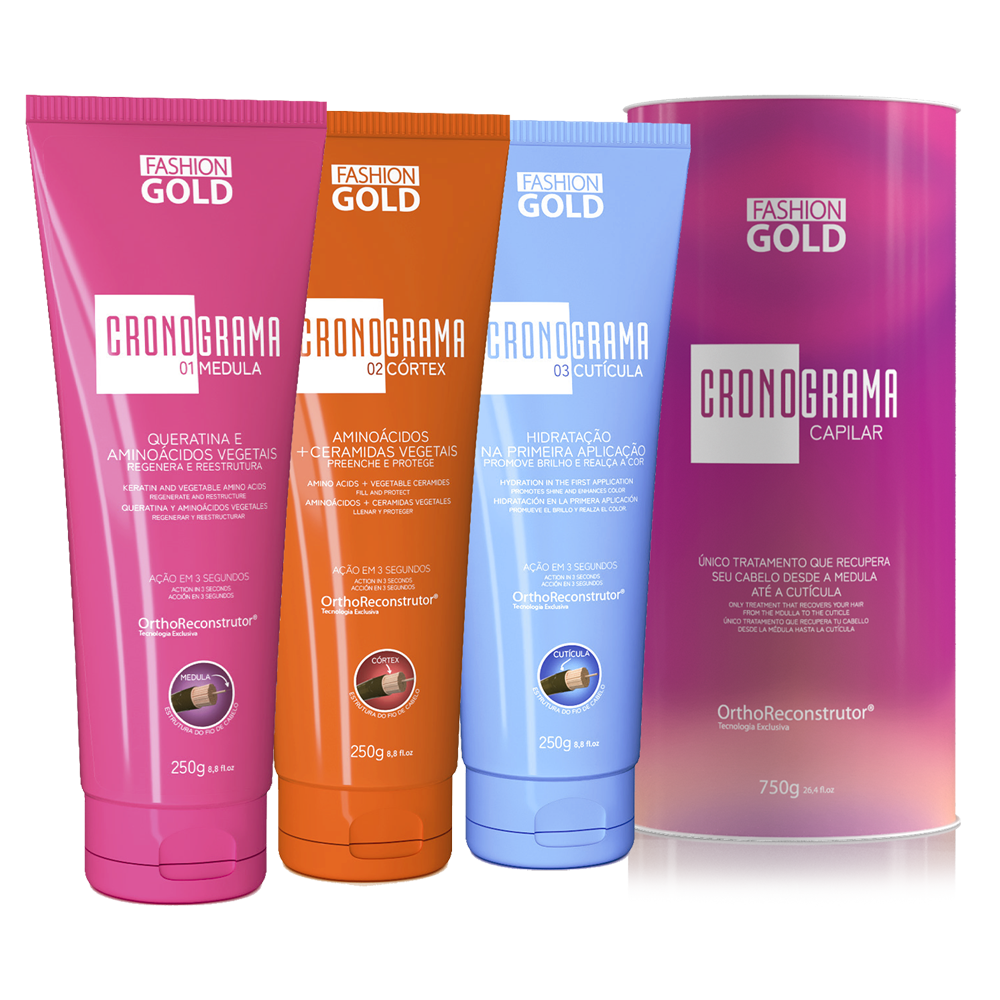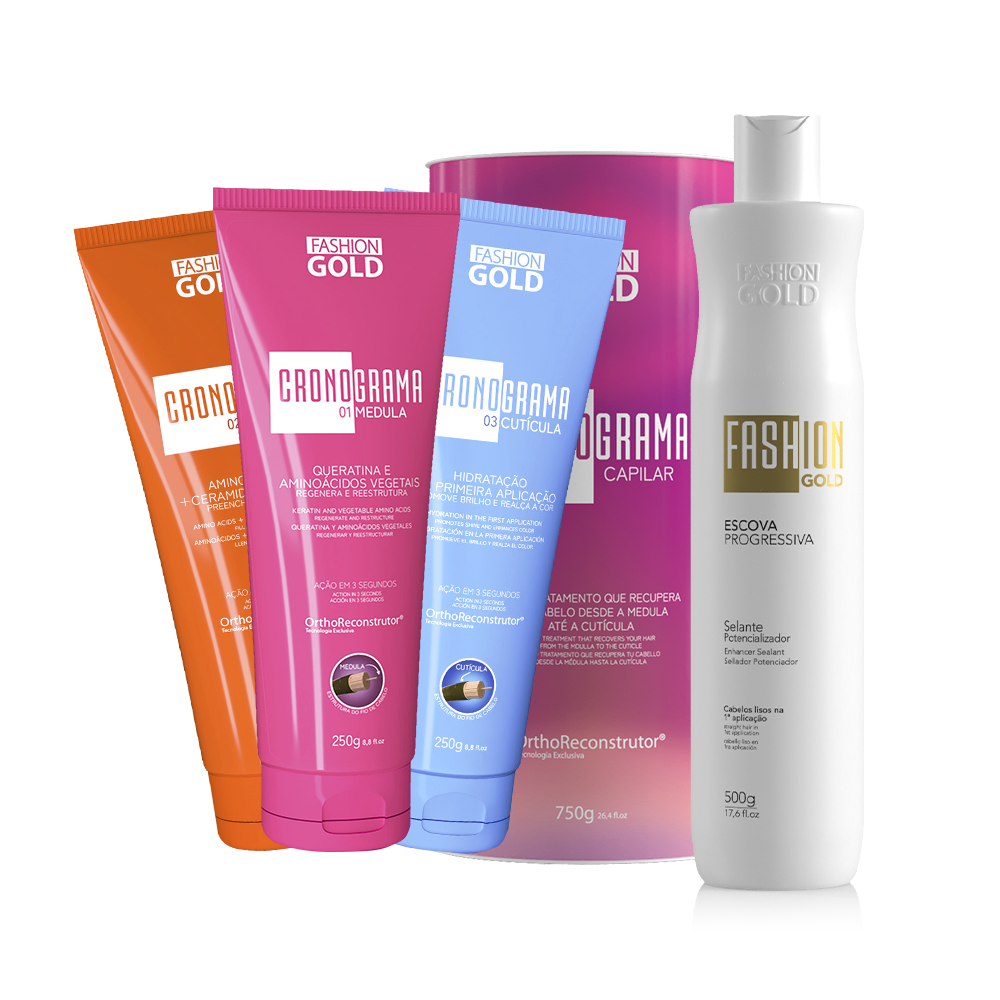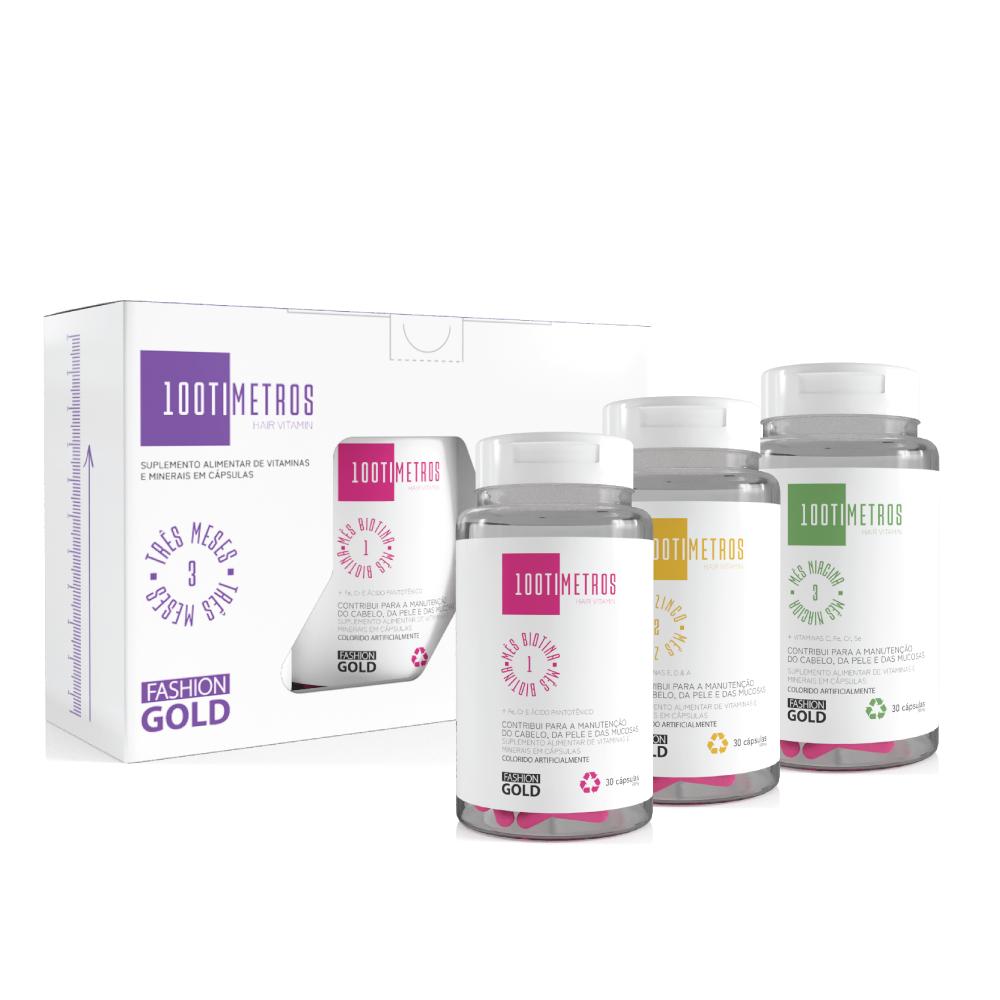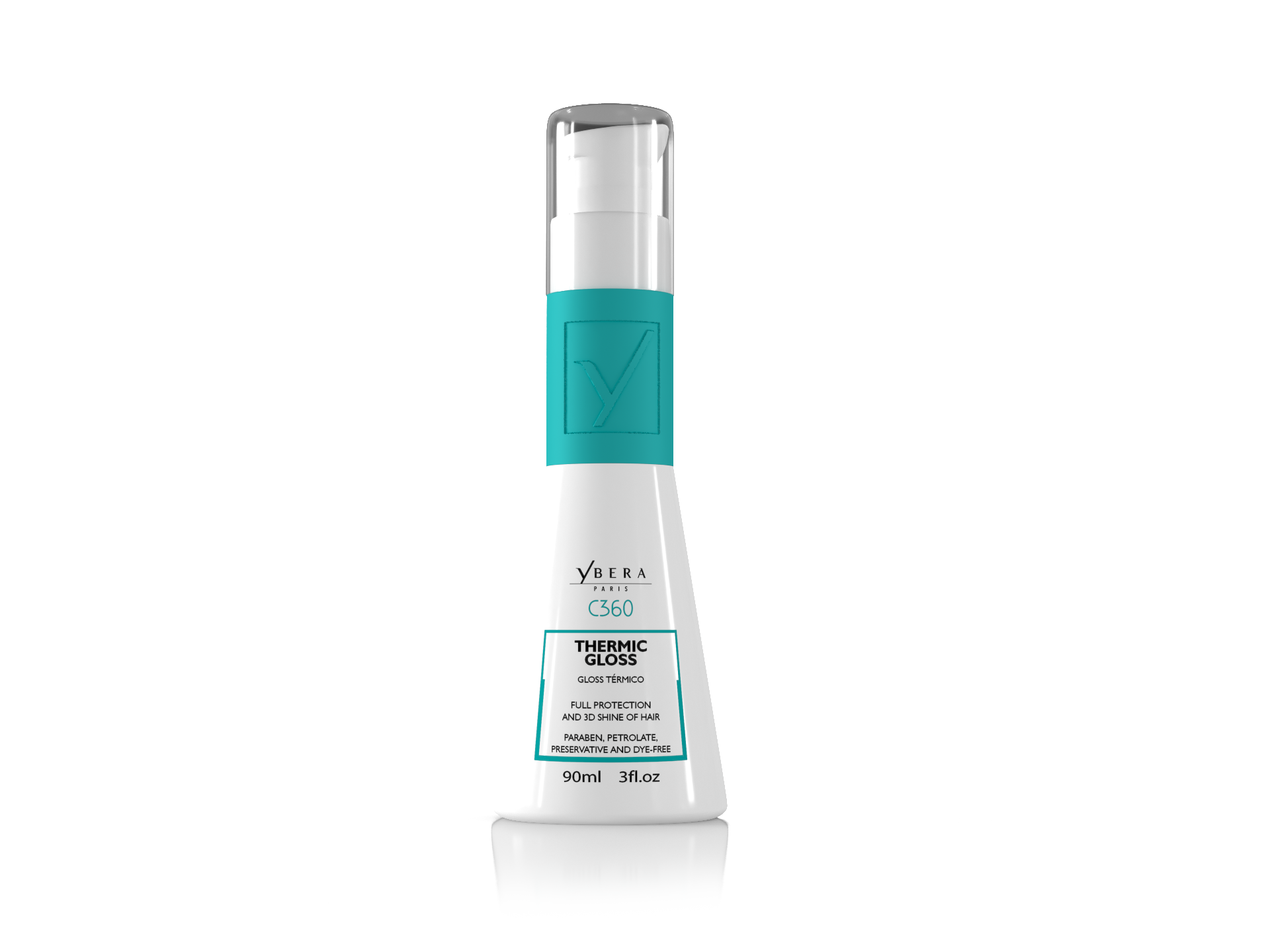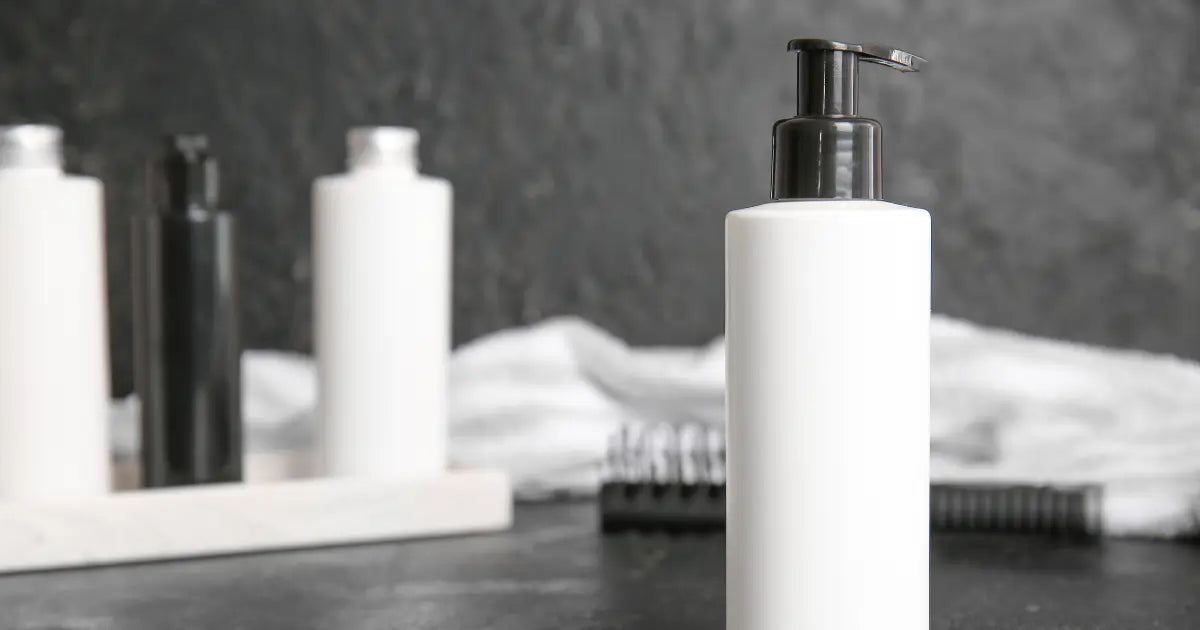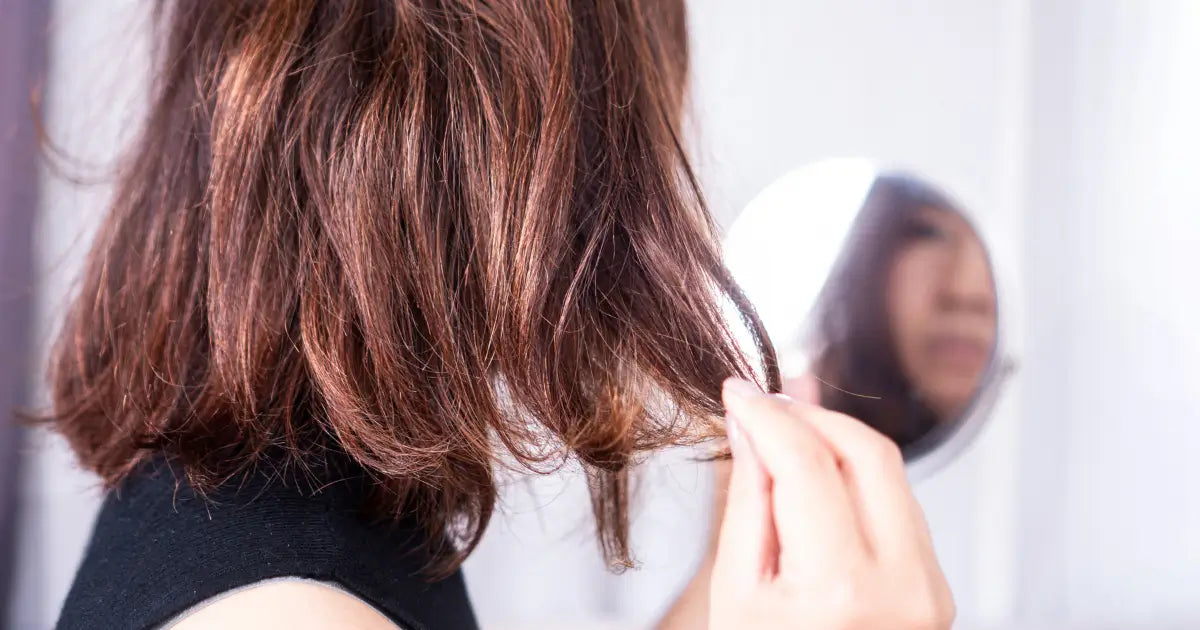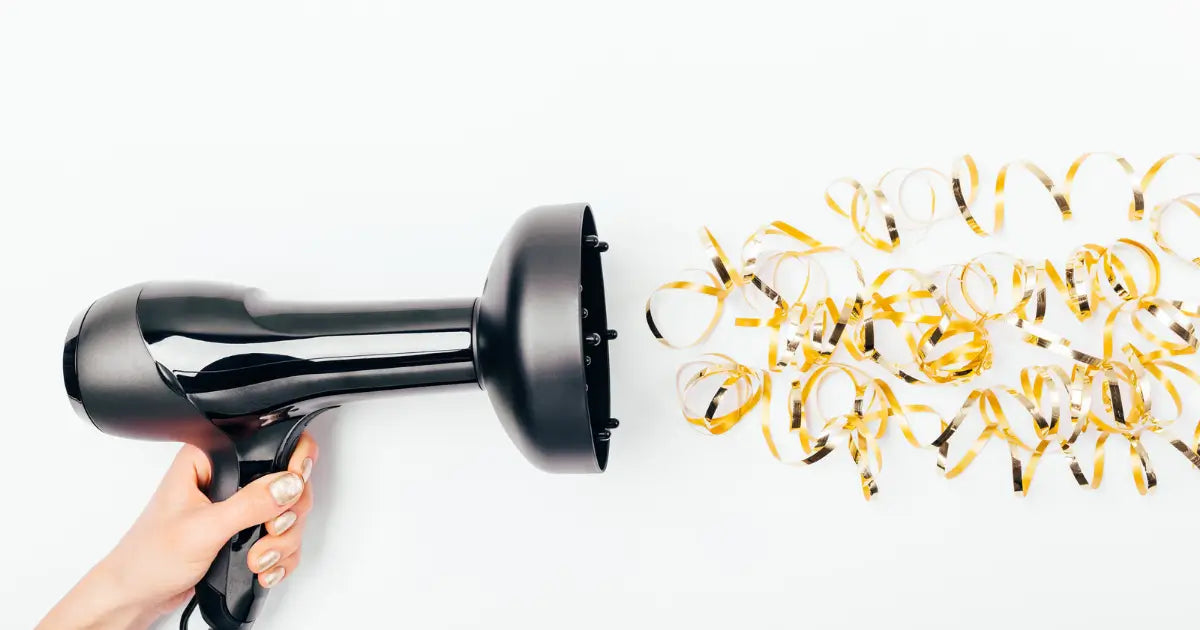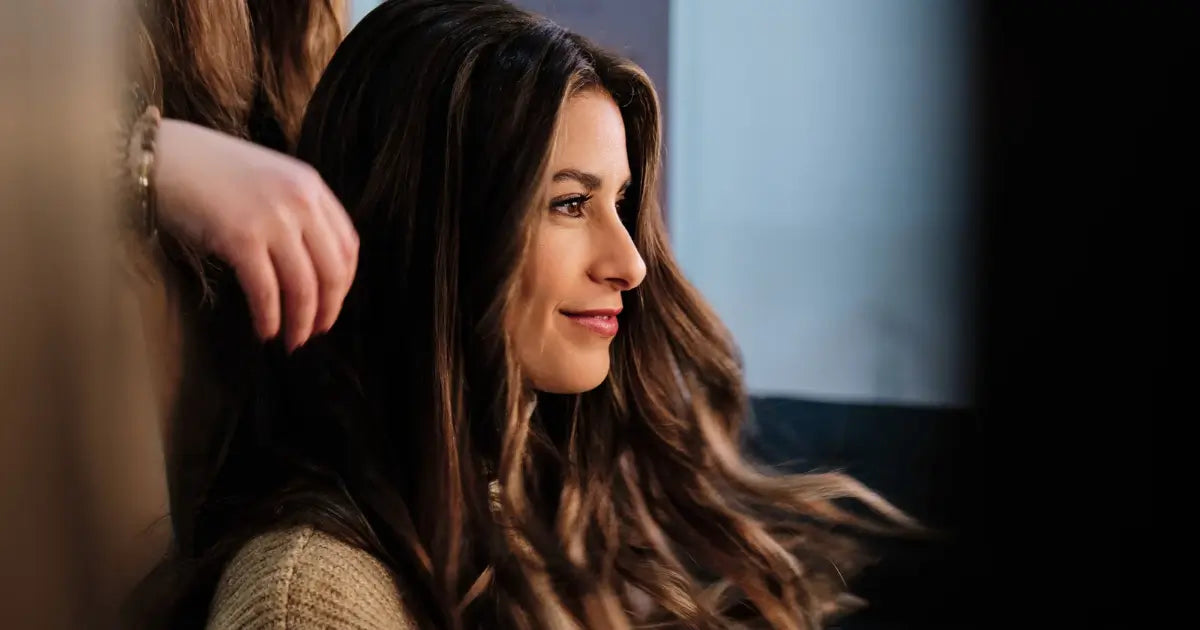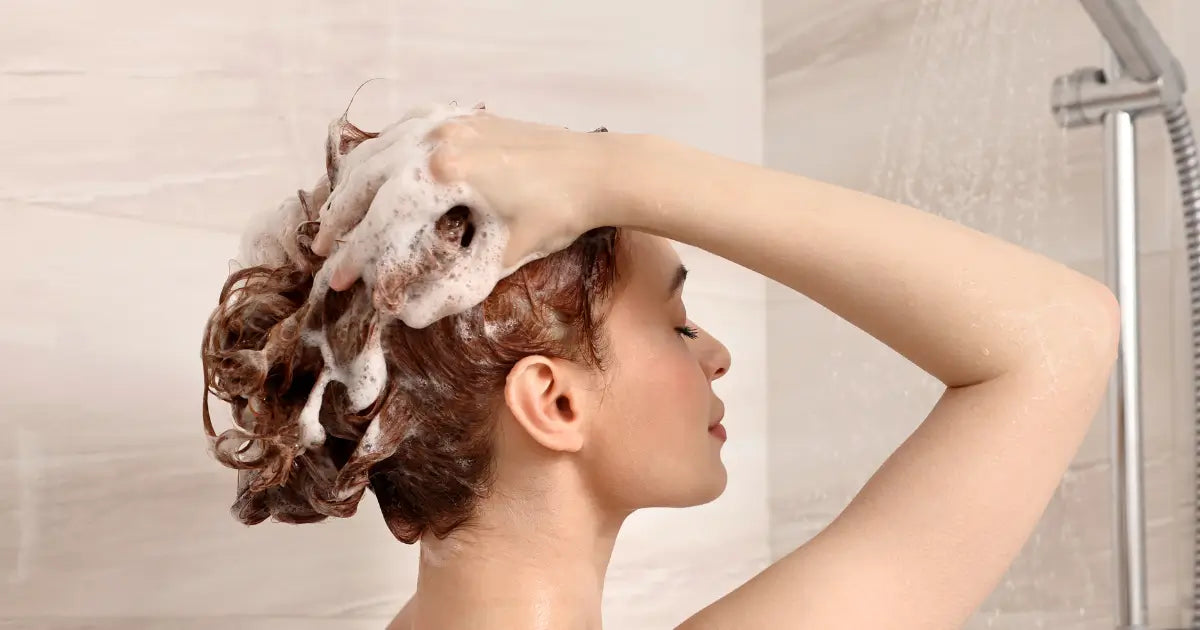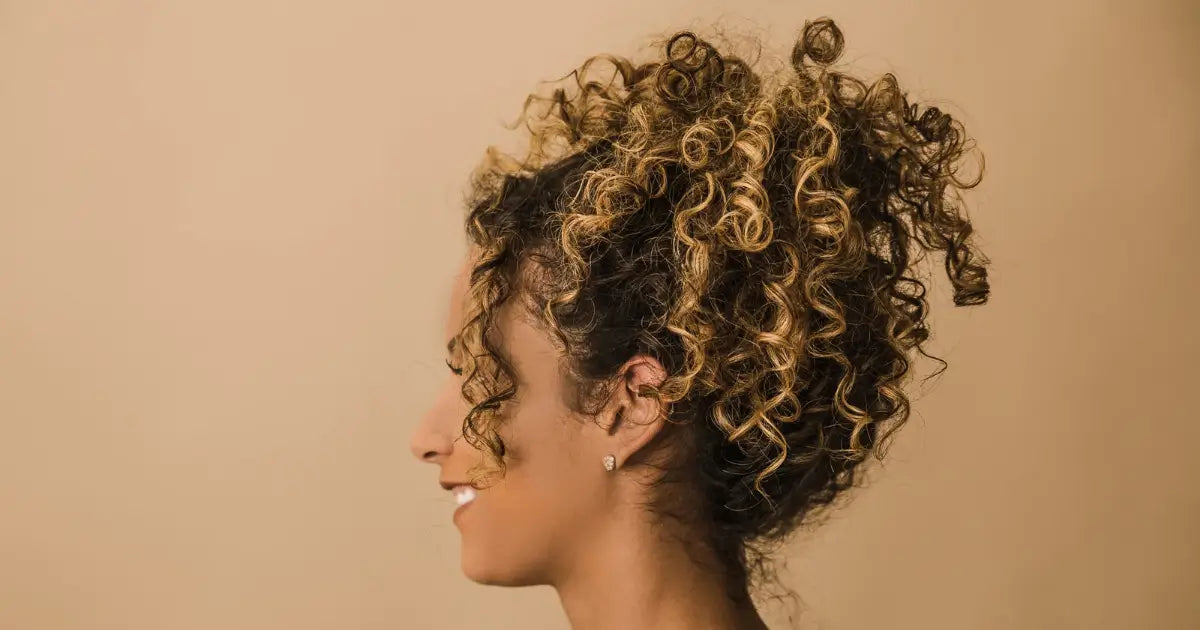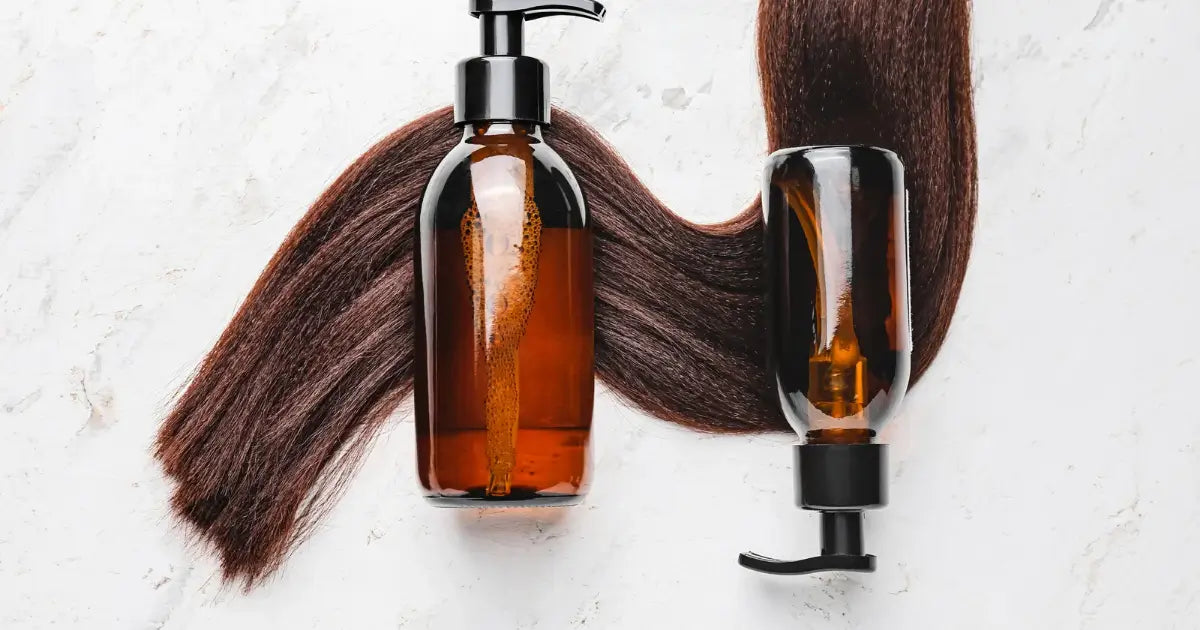The Gold Standard: Behind The Shine
Is Keratin Conditioner Treatment Worth It? Benefits & Top Pick
If you've recently had a keratin treatment—or you're considering one—you might be wondering whether a keratin conditioner is necessary to maintain the results. The short answer: absolutely. In this guide, we’ll break down the benefits of using a keratin conditioner for frizzy, dry, or chemically treated hair and how it plays a crucial role in extending the effects of your professional treatment.
Keratin treatments are popular for their ability to smooth, strengthen, and add lasting shine to hair. But without the right aftercare, those results can fade quickly. That’s where keratin-infused conditioners come in—helping to replenish lost protein, control frizz, and keep your hair looking sleek, strong, and healthy for longer.
What is a keratin Conditioner?
A keratin conditioner treatment is a product infused with keratin, a protein naturally found in your hair, to restore its strength and smoothness. These treatments come in various forms, including conditioner, shampoo, or leave-in formulas. By replenishing keratin, these products help reduce frizz, increase shine, and improve hair manageability.
Hair naturally loses its keratin over time, leading to weaker strands that are prone to breakage and damage. Keratin conditioners work by filling in the gaps where keratin has faded, helping to strengthen your hair and create a smooth, glossy finish.
How Does Keratin Conditioner Work?
Keratin conditioners work by infusing keratin protein back into the hair shaft. This helps fill in weak spots and smooths the hair cuticle. When keratin is applied to hair, it creates a barrier that locks in moisture, making your hair less prone to damage. This results in smoother, shinier hair that’s much easier to style.
Excessive heat styling, chemical treatments, and environmental stressors can cause your hair to lose its natural keratin, leading to dryness and frizz. Keratin conditioners aim to reverse these effects, helping your hair regain its natural health and beauty.
Want to learn more about how keratin works for hair health? Check out our post on the science of keratin and hair health.
Benefits of Keratin Conditioner Treatments
Keratin conditioner treatments come with several benefits that can transform the health and appearance of your hair. Here's a breakdown:
1. Reduced Frizz
Keratin treatments are famous for their ability to combat frizz. By sealing the hair cuticle, they prevent moisture from entering, which is what causes frizz. This makes your hair look sleek and manageable even in humid conditions.
2. Promotes Smoothness and Shine
One of the standout benefits of keratin treatments is their ability to give hair a glossy, smooth finish. If you’re after that shiny, healthy look, keratin is your best friend. These treatments coat the hair, making it look polished and more vibrant.
3. Long-lasting Results
Unlike other treatments that require frequent touch-ups, keratin conditioner treatments can last for weeks when maintained properly. If you use the right aftercare products and avoid excessive heat styling, the results can last up to several months.
For the best aftercare, consider reading about the best shampoo after keratin treatment.
4. Enhanced Manageability
Keratin conditioners make hair much easier to manage. Whether your hair is curly, straight, thick, or fine, keratin helps to detangle and soften it, reducing the time spent styling.
5. Protection Against Damage
Using keratin conditioners regularly can help protect your hair from further damage caused by environmental factors, such as UV rays and pollution. The added keratin strengthens the strands, reducing the risk of breakage and split ends.
6. Keratin Benefits for Damaged Hair
If you have chemically treated or heat-damaged hair, a keratin conditioner can be incredibly beneficial. It helps restore the hair’s structure by replenishing the lost protein, repairing weak or brittle strands.
How to Use Keratin Conditioner: A Step-by-Step Guide
To get the most out of your keratin conditioner, follow these simple steps:
-
Shampoo First: Use a sulfate-free shampoo to clean your hair and prepare it for treatment. Avoid harsh shampoos that can strip your hair of natural oils.
-
Apply the Conditioner: Work the keratin conditioner into damp hair, focusing on the roots and ends.
-
Leave It On: Let the conditioner sit for 2 to 3 minutes, allowing the keratin to penetrate your hair shaft.
-
Rinse with Cold Water: Rinse your hair with cool water to seal the cuticle and lock in moisture.
For more tips on proper hair care, visit our Keratin Treatment Aftercare blog.
Precautions When Using Keratin Conditioners
While keratin treatments offer incredible benefits, there are a few precautions to keep in mind:
-
Avoid Overuse: Using keratin conditioners too frequently can lead to stiff, brittle hair. Stick to a regular treatment schedule to prevent this.
-
Patch Test: Always test a small amount of the product on your skin to check for allergic reactions.
-
Limit Heat Styling: While keratin conditioners protect against some damage, excessive heat styling can still harm your hair. Use heat tools sparingly to maintain hair health.
The Science of Keratin and Hair Health
Keratin is a fibrous protein that makes up much of your hair, skin, and nails. It acts as a protective shield around each strand, providing strength and flexibility. Over time, factors like heat, chemical treatments, and environmental damage can deplete your hair's keratin, causing it to lose its smoothness and shine.
By replenishing the keratin, these treatments restore the hair’s natural strength, protect it from further damage, and give it a healthier appearance. The added keratin also seals the hair cuticle, locking in moisture and providing a protective layer from external stressors.
Best Conditioner for Keratin-Treated Hair
Choosing the right conditioner after a keratin treatment is essential for preserving results and maintaining hair health. Not all products are formulated to support keratin-treated strands—some can strip away the smoothness and protein your hair just received. That’s why it’s important to select a product that not only nourishes your hair but also works to prolong the benefits of the treatment.
Recommended: Protect & Control Conditioning Mask
This conditioning mask is specially formulated to support chemically treated and keratin-smoothed hair. It helps restore moisture, strengthen weakened strands, and control frizz—all without weighing your hair down. Its creamy texture deeply conditions the hair while protecting it from environmental damage and daily stress.
Key benefits include
-
Helps prolong the results of keratin treatments
-
Deeply moisturizes and softens hair
-
Reduces breakage and dryness
-
Enhances shine and manageability
Incorporating this conditioner into your routine once or twice a week can make a noticeable difference in the texture, appearance, and overall health of your hair. It’s a simple step that delivers long-term benefits—especially if you want to make the most out of your keratin treatment.
Conclusion
Keratin conditioner treatments aren’t just an optional extra—they're essential if you want to protect your investment in a keratin treatment and keep your hair looking its best. From reducing frizz and repairing damage to boosting shine and strength, these conditioners offer lasting benefits for all hair types, especially if your strands are dry, brittle, or chemically treated.
By choosing the right keratin conditioner and following a consistent aftercare routine, you’ll extend the life of your treatment and enjoy smooth, manageable, and radiant hair every day. Ready to take your post-treatment hair care to the next level? Keratin conditioners are a smart and simple way to make it happen.
Does Hair Texture Change with Age? Why It Happens & How to Restore It
Does Hair Texture Change with Age? It's normal for your hair to change as you age, but this process can sometimes feel frustrating. Over time, your hair may become thinner, drier, or lose its natural shine and vitality.
These changes often become noticeable in your 30s or 40s. Still, they occur gradually due to hormonal fluctuations, changes in the hair growth cycle, and environmental or lifestyle factors such as diet and product use.
Understanding why hair texture changes with age is the first step in restoring its health and beauty. With the right hair care routine, including nourishing products like hyaluronic acid, keratin, and collagen-infused treatments, you can restore your hair's natural texture and vitality. Keep reading to discover the causes of this transformation and how to restore your hair's youthful appearance.
What Is Hair Texture?
Before learning whether hair texture changes with age, you must know what hair texture is. Hair texture means your hair's natural appearance, feel, shape, color, and structure. Hair texture never remains the same, as a baby is born with extremely light and thin hair, but with growth, their hair becomes stronger and thicker. Everyone has a unique hair texture that depends upon genetics, environmental conditions of the region, and overall health.
Natural Changes in Hair Over Time
Your hair can change over time, depending on its color, appearance, and thickness. This is a natural change, and almost everyone experiences it. However, you can maintain the texture of your hair by following a healthy hair care routine.
Why Does Hair Texture Change with Age?
There are several reasons why hair texture changes with age, such as hormonal changes, genetic issues, or the use of the wrong hair products. Let's have a detailed discussion on each factor:
1. Hormonal Changes
Hormonal changes are one common reason for hair texture changes in women. As humans grow, they undergo many hormonal changes and produce different hormones, such as estrogen, testosterone, and DHT. These hormones impact hair growth and texture.
For women, disturbance in the menstruation cycle or menopause is the turning point where they suffer from a change in hair texture. On the other hand, men face a decline in testosterone. Hormonal changes and hair texture are closely related. A change in hormones impacts the way your hair behaves.
2. Reduced Oil Production
Many people wonder why their hair texture changes with age, and one major factor is sebum. Sebum is the natural oil produced by the scalp, which helps keep your hair moisturized and hydrated. However, as we age, the scalp’s oil production decreases, leading to drier and frizzier hair.
This reduction in moisture affects the overall texture, causing strands to become dry, thin, and lackluster. To combat this dryness, consider incorporating Hyaluronic Acid for Hair into your routine. This ingredient helps lock in moisture, restoring your hair’s texture and making it feel healthier.
3. Hair Growth Cycle
Human hair also follows a growth cycle. They go through shedding, resting, and growth. As you grow, this cycle becomes slower. When you cut your hair, it takes longer for the hair to grow. This slower growth contributes to a thinner overall appearance, making changes in texture more noticeable.
4. Medical Conditions and Medications
Medical conditions like nutritional deficiencies play a crucial role in the change in your hair texture. Whether you are suffering from any disorder or even taking some high-dose medicine, it will impact the quality of your hair, and that's why hair texture changes with age.
Several health issues and diseases, like high blood pressure, therapies like chemotherapy, and the consumption of antidepressants, make your hair thinner, dull, and dry.
5. Environmental and Lifestyle Factors
Environmental factors also play a significant role in affecting your hair texture. The climate in which you live can make a big difference. For example, people living in colder areas may experience thinner hair.
Additionally, exposure to harsh sunlight and pollution can severely damage your hair, causing it to lose its color, shape, and smoothness. If you're dealing with hair damage caused by these environmental factors, is salt water good for your hair? provides valuable insights on how saltwater can impact your hair and what steps to take to protect it.
6. Imbalanced Diet
What you eat matters the most for your hair! If you are concerned about why hair texture changes with age, you must know that what you eat directly impacts your hair texture. An unhealthy diet causes your hair to suffer from a lack of essential proteins.
Hair also requires food in the form of protein, which they get from healthy foods. Unhealthy food not only steals the sleekness from your hair but also causes frizz and loss of hair weight.
How to Restore Hair Texture?
If you want to know how to restore hair texture, then you must opt for a healthy haircare routine, considering the following:
1. Choose Appropriate Hair Products
Always use organic hair products without harsh chemicals. Your hair products impact the nature and structure of the hair. Formaldehyde causes thinning and roughness in hair strands. Use products containing:
-
Argan oil
-
Keratin
-
Biotin
-
Hyaluronic acid
-
Collagen
2. Focus on Scalp Care
Massage your scalp and roots gently to calm the nerves. Use gentle oils or hair serums from FG Haircare because they help regulate blood, leading to strong and thick hair.
3. Maintain a Balanced Diet
Eating protein-rich foods, vitamins, iron, and omega-3 fatty acids improves hair texture. It strengthens the roots and nourishes the scalp. Avoid junk food, as it is harmful to the body.
4. Minimise Heat Exposure
The answer to "Does hair texture change with age?" is "Yes." However, many other factors also play a crucial role, like exposure to heat. Avoid frequent use of iron rods or styling hair. It is the leading cause of the change in the hair texture.
5. Avoid Harsh Chemical Treatments
Treating hair with strong bleaches has become common, the biggest reason behind the change in hair texture. Please stick to the natural and organic products and avoid the chemical treatments until you need them. However, opting for treatments like keratin treatment supports the restoration of hair.
Conclusion
In conclusion, hair texture changes with age are a natural part of life, but they don't have to leave you with dry, brittle, or thinning hair. Hormonal fluctuations, lifestyle choices, and environmental factors affect how your hair changes. But don't worry—restoring your hair's natural texture is possible with the right approach.
You can rejuvenate your hair's appearance and feel by incorporating nourishing products like keratin treatments, hyaluronic acid, and collagen-infused hair haircare. Along with a healthy diet and regular scalp care, your hair can regain its vitality and smooth texture.
So, if you're asking, "How do I fix my hair texture as I age?" —Start by embracing a more tailored haircare routine.
Ready to restore your hair's youthful look and feel? Discover Ybera Haircare's premium products and return your hair's natural texture today!
How to Use a Diffuser on Curly Hair for Defined, Frizz-Free Curls
Do you know how to use a diffuser on curly hair? Frizz in curly hair is one of the common issues. A diffuser is a perfect solution to get rid of frizz from your hair. It throws air in such a way that curls get soft and dry. It reduces frizz without disrupting the curl pattern.
A diffuser is a tool attached to a hairdryer. It not only serves styling purposes but also helps you transform your hair. It helps you maintain perfect wavy coils in your hair. Explore the article to find out the right way to use a diffuser considering your curl type.
What Is a Diffuser and Why Is It Important?
A diffuser is a round-shaped tool with prongs that comes with a standard blower. You have to connect the tool with the dryer. Before learning how to use a diffuser on curly hair, you must know its purpose.
It is important for curly hair because it disperses the airflow evenly without damaging the wavy or curly hair. With a diffuser, you can achieve defined curls without messing up your hair. Unlike a simple blow-dry, it enhances the natural texture of your hair without any damage.
Step-by-Step Guide to Using a Diffuser on Curly Hair
Using a diffuser is slightly different than using a blow dryer. Here’s a step-by-step guide for how to use a diffuser on curly hair:
1. Preparing Your Hair Before Diffusing
The first and most crucial step is to prepare your hair before diffusing. Always start diffusing on fresh hair. Wash your hair thoroughly with curl-friendly shampoo, and dry the wet hair by squeezing excess water using a towel or a cotton cloth.
Apply a styling product like a curl cream or some light gel. You can also use a heat protection serum because these things help the curl hold its shape without getting dispersed. You can also use the air-drying method to remove excess water from your hair before using a diffuser.
2. Attach the Diffuser and Set the Temperature
You must know how to use a diffuser on curly hair, properly adjusting the temperature. Once your hair is prepared, you have to set the diffuser. Attach the diffuser properly to the hairdryer.
Ensure the heat setting is at medium with low hair flow. Considering temperature is necessary because high heat can disrupt the natural curl. Heat can damage the texture of your hair, causing the hair to lose its shape. Always set the heat and airflow considering your hair type and hair health. For sensitive hair, it is recommended to go with a medium heat setting with low airflow.
3. Section Your Hair
The next step is to divide your hair so you can manage diffusing easily. Divide your hair into sections. It will help you to dry your hair evenly. Moreover, it reduces the chance of frizzy and damp hair. You can use clips to hold different sections.
4. Cup and Lift the Hair
Using the diffuser requires proper techniques. You must know how to use a diffuser on curly hair. Always keep the face of the diffuser upward. Keep the diffuser underneath the section of the curls and flip your head forward gently to place the curl into the bowl of the diffuser. Once your curls stick to the mouth of the diffuser, bring it towards your scalp. Keep it near your scalp and hold the diffuser for 20 to 30 seconds. Gently release your hair and move to the next part.
5. Keep Moving and Repeat
Repeat the process throughout your head in all the sections. Avoid repeating the process on the section that is already set.
Disturbing the curl again and again will damage your hair and cause risk. Cupping and lifting of the hair will help you maintain the curl pattern. Avoid moving the diffuser constantly and let it do its work.
Common Mistakes to Consider While Using Diffuser
For learning how to use a diffuser on curly hair, you must know the common mistakes to avoid:
-
Using High Heat
Avoid exposing your hair to high heat. Medium heat with maintained airflow may take time to dry, but it helps in preventing dryness, damaged density, or loss of structure. Stick to low and medium heat to preserve the natural curl. -
Skipping the Styling Product
Skipping the styling product is one of the common mistakes people make. Without a product, your curls may not settle properly or may cause fluff. Always use lightweight products to bring a noticeable difference to your hair. -
Not Letting the Hair Set
Preparing and setting your hair before using the diffuser is important. One of the common things to learn about how to use a diffuser on curly hair is to know how to set your hair before using a diffuser.
Diffusion Technique for Different Hair Types
Curly hair also has a few types; therefore, you must know proper ways for how to use a diffuser on curly hair and its variance.
-
For Fine or Loose Waves
People with fine or wavy hair must prevent exposure to high heat or excessive styling products. Focus more on the ends and avoid root volume. Avoid directing airflow to the hair roots. Keep the diffuser on low airflow to maintain a proper texture. -
For Coarse or Coily Hair
For people having very tight and curly hair, a diffuser helps you preserve the natural curls and gives you control over curl shrinkage. In such cases, it is recommended to use heavy styling products. Ensure you use a diffuser only on fully dry hair to prevent frizz. Moreover, on such hair, you can increase the temperature slightly.
Conclusion
Learning how to use a diffuser on curly hair is very important. But before this, you must know and understand your hair type and texture. And a diffuser helps you maintain the natural texture of your hair without causing any damage to its structure. Using a diffuser will help in preventing frizz for a longer time. Moreover, it is necessary to handle the diffusing process gently. Prepare your hair, apply appropriate styling products, and then use the diffuser in the correct directions to have a final outcome.
Is Salt Water Good for Your Hair?
Salt water may be many things for your hair. It can give you those cool beachy vibes and add minerals to your hair but can also dry out your hair. If you are also wondering if you should let your hair be soaked in beachy salt water or not, then this guide is for you.
Is saltwater good for your hair?—a question many people ask when trying to give their hair the best environment.
Here is everything you need to know about saltwater and how to protect your hair effectively.
Salt water is a protein formulated by nature and packed with many minerals and elements that may do wonders for your scalp and hair. It isn’t only about sodium chloride; it also has potassium and magnesium that can balance your scalp's pH levels. This can become a game changer for helping with dandruff and other scalp irritators. But as we all know, moderation is always important in all skincare and hair care routines.
Getting too much saltwater exposure may lead to brittleness or dryness, which can damage your hair cuticle. While these beachy waves are great, you should give your hair some extra care and love to maintain its health and overall shine. Also read: Healthy and gorgeous summer hair.
Is Saltwater Good for Your Hair?
Here are some of the positive impacts of saltwater on your hair:
● Adds minerals to hair
Saltwater is full of all the essential vitamins, such as calcium, magnesium, selenium, and potassium, that are ideal for hair health and growth. These minerals add up to build your hair structure, so breakage is reduced.
● Natural scrub
Saltwater is more like a natural exfoliator for hair and scalp. The small salt particles scrub off dead skin cells and remove excess oils to give you a fresh scalp. This explains the question of whether salt water is good for your hair or not.
Taking a dip in the ocean is more like a small spa day for your hair and scalp. You must always make sure not to go overboard. Saltwater may dry out the scalp as it can strip away natural oils. You should use a gentle shampoo and treat hair with moisturizing masks to keep everything balanced.
● Beach waves and volume
Saltwater can give you great hair texture, adding beachy waves to your look and a lot of volume as well. Salt simply lifts your hair cuticles, making them appear fuller and more textured.
The Downside of Salt Water for Your Hair
Now that you know the benefits of salt water, you should also go through its downsides to always protect your hair. Knowing these tips before you wet your hair in saltwater will save you many salon visits and treatments to get the shine back to your hair.
1. Dryness and brittleness
Saltwater may suck out most natural oils in your hair that keep the scalp moisturized and healthy. This can make the hair strand brittle and dry; hence, breakage happens. To avoid this mess, you should rinse your hair with fresh water right after swimming in saltwater. This will remove junk and salt from your strands and keep your hair protected.
2. Color fade
If you have color-treated hair, then you must always watch out. Saltwater may speed up color fading by simply stripping away moisture and pigments from your hair that can alter the hair structure and leave your hair dull. To simply keep the color popping, you should use toning treatment to remove yellow tones from the hair strands.
3. Scalp irritation
Salt water may be a great pain for your scalp, mainly if you already have soft, sensitive skin. It may cause redness and irritation. So to avoid this, you should take extra care of your hair texture and protect your hair from skin irritants. You can use natural oils such as argan oil or aloe vera to soothe your irritated scalp. This will give you hydrating and calming effects. You can add these items to your everyday hair care routine to reduce the harmful effects of saltwater on your scalp.
Now this explains both sides of the answer to the question: Is salt water good for your hair?
You can always take a dip in the ocean while not harming your hair and skin if you are cautious and take care of the overall health of your hair. Doing everything in moderation will keep your hair texture, scalp, and skin healthy and soft.
Getting a massage here and there can stimulate blood flow and bring positive changes in your mood as well. The more you explore options for soothing your scalp irritations, the more you will understand the effects of saltwater on your hair.
Knowing more is always best to avoid unwanted scenarios. You should always know the complete answer to Is salt water good for your hair? and make sure you don’t mistreat your hair or act carelessly. Taking a dip in the ocean is a great experience, but always make sure you have protected your hair and skin with suitable products. Also, reduce your stay in the saltwater to keep enjoying such dips in the future.
Learn how to manage frizz with our guide on hair treatment for smooth hair.
Conclusion
Is salt water good for your hair?—this question has both sides of the answer and can give you positive and negative results.
If you take dips in the ocean in moderation and also maintain your hair protection, you won't see any adverse effects of saltwater on your hair and scalp.
You should always rinse your hair with normal water after getting a dip in saltwater. This will remove extra product build-ups from your hair and will let the cuticles remain unclogged and fresh. Saltwater has its positive and negative effects on your hair, and you can use it for your good if you know how to take care of your scalp after each dip in saltwater.
How to Get Perfect Beach Waves Hair: Step-by-Step Styling Guide
Do you want to get beach wave hair? Beach waves are one of the most popular minimalist hairstyles, known for their soft, loose, and slightly wavy look—less messy than typical curls. When it comes to effortless style, many people choose beach wave hair for its elegant and laid-back appearance.
The best part? Even if you don’t have natural beach waves, you can achieve them easily with the right tools and techniques. Keep reading to learn how to get perfect beach waves step by step.
Step-by-Step Guide to Achieve Perfect Beach Waves Hair
Beach waves are the only hairstyle that suits everyone. It perfectly matches almost every face shape. Here is a step-by-step guide to getting perfect beach waves:
1. Start with Clean, Dry Hair
The first step to getting beach wave hair is to get your hair clean and dry. On freshly washed hair, you can get a sleek and professional look of beach waves. Use a lightweight shampoo and conditioner to wash your hair. Gently dry your hair with some cloth or air-dry it for some time to prevent frizz.
2. Apply a Heat Protectant and Texture Spray
Before starting the procedure for getting beach wave hair, like in keratin treatment aftercare, applying a heat protectant before styling is essential to avoid damage and retain shine. A heat protectant serum or spray will prevent damage from styling tools and exposure to heat. It will also maintain the grip of your hair so you can get an improved texture.
3. Section Your Hair
To get smooth beach waves, section your hair using clips. It’s better to divide your hair into four parts. Start with the bottom layer and go to the upper layer. It will ensure that every strand is curled properly.
4. Get Your Tools Ready
Get your tools ready. Beach wave hair is formed with the help of a curling iron. The size of the curling iron varies between 1 and 1.25”. This size is perfect to create natural-looking beach waves hair. Set the temperature according to your hair type. For thicker hair, you can set the temperature up to 400°F. Whereas for thin hair, a temperature around 300°F is preferred. Turn on the curling iron and let it reach the maximum heat.
5. Curl Strategically
Once your tools are ready, start curling small sections of hair. You just need to coil your hair strands around the curling plate. Hold it for around 8 to 10 seconds, and then release it gently. Repeat the procedure until all your hair is done, leaving a perfect impression of beach wave hair.
6. Shake It Out
After curling the hair, let them cool completely. Gently shake out all the waves using your fingertips. This gives a smooth look to your overall hair. It will break the structured formation of coils and will transform your hair into gentle, soft waves. You can also use a tooth comb to detangle your hair.
7. Lock It in Place
Once you’re completely done, lock your beach wave hair into a perfect look. You can use any hair-holding spray or a textured mist to lock your hair structure. This will also cause stiffness, which makes your hair look shiny and sleek.
The Right Tools for Beach Waves Hair
Understanding the right tools for getting perfect beach wave hair is necessary. You must have the following tools for getting beach waves:
-
Flat iron
-
Rollers
-
Setting spray
-
Wide tooth comb
-
Heat protectant
Choosing the Right Curling Iron
Whether you're using a curling wand or a smoothing hair treatment, choosing the right tools makes a noticeable difference. You must consider the size and width of the curling iron to achieve the perfect and natural look. A narrow rod will lead to tight curls. Therefore, using a flat iron curler is better to attain a natural look.
Beach Waves Hair Tips Based on Hair Type
Before starting the process of producing waves in your hair, you must understand the hair type and its requirements.
1. For Fine Hair
For fine and silky hair, it is necessary to use our dry shampoo. It will help in minimizing the sleek texture. A little rough texture helps in maintaining the shape and increasing the hair lift.
2. For Thick Hair
Individuals with thick hair must work in smaller sections. Also, using a high-heat curling iron is preferred. You can also increase the holding time and lock the hairstyle using a strong spray.
3. For Curly or Wavy Hair
For curly or wavy hair, you just need to clean the hair strands. You can also start the process by straightening your hair and then producing the curls through a curling iron. Avoid too many hairstyling products or sprays to maintain the natural texture.
No-Heat Methods for Beach Waves Hair
There are several ways to achieve beautiful beach waves, and the two main categories are heat-based and no-heat methods. While curling irons and wands fall under the heat styling category, no-heat techniques are an excellent option for creating waves without damaging your hair.
Braiding Method
Braiding is one of the best ways to get soft and natural waves. After taking a shower, just make two or more braids in your damp hair. You can also slightly dampen your hair and make braids. Leave them overnight and release the braids in the morning. Use a wide-tooth comb to brush your hair in the morning.
Common Mistakes When Creating Beach Waves
Even though beach waves look effortlessly chic, a few common missteps can leave your hair looking less than flawless:
-
Using too much product: While sea salt sprays and texturizers are key, going overboard can weigh down your hair or make it feel sticky.
-
Curling in the wrong direction: Always curl away from your face to get that natural, wind-swept effect. Curling inward can make waves look too structured or outdated.
-
Skipping heat protection: If you're using hot tools, never forget a heat protectant spray to prevent damage and dryness.
-
Not brushing out curls: After curling, always finger-comb or lightly brush your waves to break them up and soften the texture—otherwise, you'll end up with tight curls, not waves.
-
Using the wrong barrel size: A smaller barrel creates tighter curls. For relaxed beach waves, opt for a 1- to 1.25-inch barrel.
Conclusion
Beach wave hair remains one of the most popular and versatile hairstyles. It offers a soft, polished look that works well for all hair types—whether your hair is long, short, straight, or wavy.
To achieve the perfect beach waves, start by prepping your hair with a heat protectant. Allow your curling iron to reach the ideal temperature, create clean curls, let them cool, and then gently tousle your hair for a natural finish. With the right steps, beach waves can easily become your go-to everyday or special occasion style.
FAQs
1: Can I get beach waves without using heat?
Yes! Braiding damp hair before bed, using twist buns, or applying a sea salt spray to air-dried hair can give you heatless waves.
2: How long do beach waves last?
Depending on your hair type and the products used, they can last from one day up to three. Using a light hairspray or wave spray can help extend the look.
3: Is sea salt spray bad for your hair?
Overuse can be drying due to the salt content, but occasional use is fine. Choose formulas that include hydrating ingredients like coconut water or glycerin.
4: What size curling iron is best for beach waves?
A 1- to 1.25-inch curling wand or iron is ideal for creating soft, tousled beach waves.
5: Can I do beach waves on short hair?
Absolutely! Use a smaller barrel curling wand or flat iron technique. Just remember to style smaller sections and avoid heavy products that might weigh short hair down.
Best Sulfate-Free Shampoo in 2025 – Frizz-Free Hair Care Guide
Shampoo is one of the most used hair care products—yet everyone has their own take on it. Some grab the cheapest bottle on the shelf, while others search endlessly for the perfect salon-approved formula. But whether you go budget or high-end, the goal remains the same: clean, healthy, beautiful hair.
As we move into 2025, there's a major shift toward more conscious hair care—particularly sulfate-free shampoos. Whether you're looking for gentler cleansers, organic ingredients, or hair repair solutions, the right shampoo can significantly improve both scalp and hair health.
What’s New in Sulfate-Free Shampoo?
The haircare industry is evolving fast. In 2025, sulfate-free shampoos are going beyond just being “gentle.” Expect:
-
Biotech-powered ingredients that repair damage at the root level
-
Eco-friendly packaging and sustainable formulas
-
Salon-exclusive lines with luxurious results for at-home use
Now, let’s break down what sulfates are—and why so many people are ditching them.
What Are Sulfates in Shampoos?
Sulfates are detergents in shampoos that help eliminate oil, dirt, and styling products. They are the elements that form foaming lather and bubbles, which eventually help in cleaning hair and scalp. Sulfates may be highly irritating to your scalp or can be too drying, which can leave your hair frizzy and cause skin discomfort.
Whereas, in contrast to any traditional shampoo, a sulfate-free shampoo creates less foaming lather but offers you a gentle wash to maintain the natural balance of oils in your scalp. This will cut down on the frizz factor since the hair and scalp will be more hydrated after using sulfate-free shampoo.
Why Choose Sulfate-Free Shampoos for Frizz-Free Hair?
Sulfate-free formulas are trending for a reason. They help maintain shine, reduce frizz, and keep treated hair looking smooth. Many users rotate between sulfate and non-sulfate shampoos throughout the week depending on their needs. Discover the best shampoo to use after a keratin treatment.
Key benefits include:
-
Less dryness and irritation
-
Long-lasting results for straightening treatments
-
Better hydration and curl retention
-
Safe for color-treated and chemically-processed hair
How We Picked the Best Sulfate-Free Shampoos
The list of all sulfate-free shampoo options we formulated was designed based on the following factors:
● Viscosity
This point refers to the thickness or lightweight of the shampoo formulated in your hands. Any products that were too thick or too runny didn’t fall into the list.
● Scent
Either a shampoo is for $1 or $100; if its smell isn’t refreshing or great, it won’t pass the test. Scents that make you feel like you are in a salon the moment you open the bottle are the ones that we are looking for.
● Longevity
The frequency with which you wash your hair is totally dependent on your hair thickness and type. The kind of shampoos that make your hair flat are not ideal ones. So lightweight and extended-duration shampoos are the best ones.
Sulfate-free shampoos help in preserving hair color, and they also work ideally on color-treated hair or hair that has had certain treatments done, such as glosses or glazes.
To get the best results from your specified shampoos, you need to rotate them. You can rotate sulfate-free shampoos and the ones that have sulfates in them to help keep the cycle going smoothly. Using sulfate-free shampoo may dry the hair out, so you should also keep this in mind.
Salon-Approved Picks for 2025
Professional salons are recommending sulfate-free shampoos more than ever—especially for clients with color-treated, keratin-treated, or chemically processed hair. The focus this year is on maintaining long-term hair health without compromising on shine, smoothness, or style longevity.
Top Sulfate-Free Shampoos for Healthy Hair in 2025
Here are some of the top sulfate-free shampoo suggestions you can use in rotation with your traditional shampoo.
1. FashionGold Protect and Control Shampoo
FashionGold Protect and Control Shampoo helps in extending the results of straightening treatments on your hair and also preserves hydration and shine. A traditional shampoo will reverse the effects of any hair treatment 5x faster, which leaves hair dull and dry. But this shampoo will preserve your hair and keep it looking highly lustrous and shiny without dryness or dullness.
FashionGold Shampoo is formulated with advanced technology to help hair cuticles remain closed, which prevents oxidation and loss of any essential active ingredients that maintain nourished, smooth hair. It is compatible with all chemical treatments and is also safe for everyday use.
Perfect for frizz control, shine, and hydration.
2. Amika Mirrorball High Shine + Protect Antioxidant Shampoo
If you are a lover of beauty, then a single look at its products will tell you how much beauty the Amika brand holds in it. Its Mirrorball High Shine shampoo is one of its newest haircare launches. It is a hit among hair enthusiasts. It is one of the best sulfate-free shampoo options that you can find. It will help control frizz and flyaways and will leave your hair shiny and smelling very fresh.
3. Aveda Botanical Repair™ Strengthening Shampoo
This bottle of sulfate-free shampoo will help strengthen your hair mainly because it is a plant-powered bottle of goodness. It will bring life to your hairstyles once you style them. Your hairstyles will also easily last many days once you start using this solution. It contains a great aroma along with certified rose, ylang-ylang, and marjoram flower and plant essences.
Conclusion
These sulfate-free shampoos are all great options to keep your hair looking healthy and frizz-free. If you're unsure where to start, FashionGold Shampoo is definitely worth trying—especially if you’ve had any treatments done or just want a shampoo that keeps your hair shiny, soft, and hydrated. It’s gentle enough for regular use and helps maintain the results of straightening or smoothing treatments.
Of course, everyone's hair is different, so it's always a good idea to check the ingredients and choose what works best for your hair type. But if you're looking for something effective and reliable, FashionGold might just be the one.
Keratin Treatment for Curly Hair: Will It Straighten or Define Your Curls?
Are you blessed with perfect swirls and curls of hair? This is the kind of blessing that most don’t understand how to handle or keep intact. Most people with curly hair end up ruining their hair texture due to improper care of their hair and scalp.
Curly hair can add to anyone's beauty and overall persona in many ways, but one needs to understand how proper curly hair should be kept and understand different treatments that are suitable for curly hair. One of these treatments is keratin treatment for curly hair.
This hair treatment has been quite popular among curly-haired people due to its great results. The misconception about keratin is that it is only meant to straighten the hair. A keratin treatment is a process of injecting keratin protein that helps smooth out the hair, which allows them to have shiny and healthy hair. This is suitable for both curly and straight hair in its way.
This treatment will let your hair be more gorgeously flowing and dense. This blog will help you understand the results of keratin treatment for curly hair and how you can use it to get a beautiful, dense, curly mane for yourself.
Keratin Hair Treatment Results on Curly Hair
A keratin treatment will preserve your natural curls and let you manage your hair effectively. Keratin for wavy and curly hair is an ideal option to tame the frizz away and improve the overall texture of the curls.
This makes hair appear healthy and manageable. It helps in giving them smooth, soft curls. One other factor that makes this treatment the best among others is the fact that the results of keratin complex treatment last for 3–6 months.
Will Keratin Treatment Make My Curly Hair Straight?
Keratin treatment is more of a smoothening therapy for hair, and it helps in fixing flyaways and frizz while promoting shine and tangle-free hair. This keratin treatment for curly hair will give your strands the goodness of keratin protein, which makes them look thicker, healthier, and smoother. You will be able to get any hairstyle on your locks without hassle.
Keratin Treatment for Enhanced Hair Definition
A keratin treatment smooths frizz and deeply nourishes the core of your curls. It will nourish your strands and add elasticity to them. Keratin treatment for curly hair will give you soft curls and improve hair definition to a great extent.
Along with this, your curls' texture will improve by many folds, and keratin treatment for curly hair will rehydrate the natural strands to enhance the texture of beautiful and smooth curls. This treatment is the best choice for damaged hair, as it will strengthen your natural hair texture.
Do You Have Hair Porosity Issues?
Hair porosity is your hair's ability to absorb and lock in moisture. Curly hair gets more porous with curly and coarse hair texture. Keratin for curly hair may be your best option to nourish the hair cuticles and help make them stronger.
Keratin treatment will help make your hair smooth and will also repair any hair damage done due to styling or mismanagement. It helps your hair shaft to protect your moisture mantle, reduce overall dryness, and make your curls shiny, smooth, and effortlessly flowing.
Should I Get a Keratin Smoothing Treatment for My Curly Hair?
If you have curly hair that looks damaged and dull, then this is the best time to get keratin treatment for curly hair. This treatment will bring new life to your scalp and hair and will allow you to love your curls all over again. You can enjoy the effects of this treatment and can also preserve this treatment for long by using specific shampoo and conditioner.
This treatment helps reduce frizz for all hair types and gives your hair new life based on its revitalizing results. You can then get your hairstylist to give you natural, bouncy curls or retain the original look of your curls to keep the styling results for longer durations. Your keratin-treated hair will add to your confidence and allow you to move around in style and natural beauty.
Curls are a beautiful human hair trait, and they should be preserved in their original state. A keratin complex applied to your hair will rejuvenate its natural curls and allow you to feel confident in your naturally blessed hair. You can find many keratin complexes out there to try for your hair.
A keratin treatment for curly hair will take 30 minutes or an hour, but the results will last way longer. You will feel your hair not drying out after each wash and enjoy a lustrous shine on your soft curls for the months to come.
You will be given specific shampoo and conditioner for your keratin-treated hair so that the effects of keratin treatment for curly hair can last longer. These products will tame flyaways and smooth out the frizz in your hair. Conditioners for curly hair will have natural oils, keratin compounds, and plant extracts to renew keratin protein in hair and hence support healthy-looking, gorgeous curls.
Conclusion
Curly hair is special—but it needs the right care to shine. A keratin treatment can smooth out frizz, add shine, and make curls easier to manage—without taking away your natural bounce. With the right aftercare (think sulfate-free shampoo and conditioner), results can last up to 5–6 months.
If your curls feel dry or hard to tame, keratin might just be the refresh they need. It’s a simple way to bring out the best in your hair and feel good doing it.
Ready to fall in love with your curls all over again? Consider getting a professional keratin smoothing treatment designed specifically for curly hair and see the difference for yourself.
Brazilian Blowout vs. Keratin Treatment: Which One is Right for You?
Are you confused about which hair treatment is best for you—Brazilian Blowout or keratin treatment? This article is here to help! We’ll explore how each treatment works, their differences, and which one suits your hair type.
Brazilian blowouts and keratin treatments have become popular in the world of hair care for their ability to transform frizzy hair into a smooth, shiny look. Both promise to reduce frizz, whether you have curly hair, natural hair, or are simply looking for a sleek finish.
However, these treatments differ in their formulations, benefits, and processes. In this article, we’ll dive into the key differences, benefits, aftercare tips, and costs to help you decide which treatment is right for you.
Brazilian Blowout vs. Keratin Treatment
What Is a Brazilian Blowout?
A Brazilian Blowout is a smoothing treatment that uses a formula made of amino acids and proteins to reduce frizz and give your hair a sleek, shiny finish. It coats each strand with a protective layer, helping to eliminate frizz without making permanent changes to your hair’s structure.
-
Temporary smoothing
-
Works well on all hair types
-
Allows you to keep natural texture
-
Easier styling and drying
What Is a Keratin Treatment?
-
Reduces frizz and restores protein
-
Ideal for damaged, dry, or unruly hair
-
Improves hair health over time
-
Doesn’t straighten completely
Brazilian Blowout vs. Keratin Treatment: Key Differences Explained
Both treatments work best to smooth and de-frizz the hair, but there is a difference in their procedure and long-term effects. A Brazilian blowout is for the people who have curly, wavy hair. It is best for people who are looking to eliminate frizz from hair without making any significant changes in the structure. The keratin treatment works by restoring the natural protein in the hair; it is mostly requested by people who have unruly or curly hair.
How Do These Treatments Work?
Keratin treatment and Brazilian blowout create a protective layer by locking up the humidity and sealing the moisture. A Brazilian blowout is specially designed to get rid of the frizz and create a smooth finish. While keratin treatment is most focused on repairing the damage to hair with amino acids and protein.
How Long Do the Results Last?
-
Brazilian Blowout: Typically lasts up to 3 months with proper care.
-
Keratin Treatment: Can last up to 5 months, depending on your hair type and maintenance routine.
Cost Comparison
Both treatments are priced similarly and depend on hair length, thickness, and salon. On average:
-
Brazilian Blowout: $100–$450
-
Keratin Treatment: $150–$500
For a more detailed guide, read our article on keratin treatment price.
Which Treatment Is Right for You?
Brazilian blowout vs. the keratin treatment: while going for the hair treatment, it is very important to know which treatment is best according to your hair type.
For curly and natural hair, a Brazilian blowout is beneficial as it helps to loosen the curls and reduce the frizz without straightening the hair completely. It enhances the texture of the natural hair.
While the keratin treatment works best for damaged and dry hair, it restores the protein to the hair, making it look healthy. The treatments cost similarly to each other; there is no such huge difference. The cost mainly depends on the length and thickness of your hair.
Blowouts and keratin treatments came as a miracle in the world of hair care for people who are done with their frizzy, curly hair.
Aftercare Tips: What to Do After the Treatment
After the Brazilian blowout, it is necessary to not wash your hair for at least 42 hours, and for the keratin treatment, 72 hours. Also, for the keratin treatment, you should be careful of the UV rays. Use sulfate-free shampoo as given by your stylist.
For more aftercare tips, read our detailed guide on keratin treatment aftercare.
Recommended Product for At-Home Results
If you're looking for a salon-level smoothing treatment at home, the Fashion Gold Brazilian Keratin Smoothing System is a professional-grade option. It reduces frizz, enhances shine, and leaves your hair more manageable—without harsh chemicals.
Conclusion
In the Brazilian Blowout vs. Keratin Treatment debate, the best choice depends on your hair type and goals. If you want a sleek look and styling ease, go for the Brazilian Blowout. If your focus is on repairing damage and adding long-term smoothness, a keratin treatment may be better. Both treatments offer beautiful, frizz-free hair with the right care.
FAQs
Which lasts longer, a Brazilian blowout or keratin?
Keratin treatments usually last up to 5 months, while Brazilian Blowouts last up to 3 months with proper aftercare.
Which one is better for fine or damaged hair?
Brazilian Blowout is a safer choice for fine or fragile hair, whereas keratin treatments may feel heavier.
Keratin Treatment Controversy: Is It Safe or Risky for Your Hair?
Thinking about getting a keratin treatment but feeling unsure about the risks? You’re not alone. Keratin treatments have become super popular for people who want smooth, straight, frizz-free hair—especially those with curls or waves. But along with the hype, there’s also a lot of controversy.
Some say it can damage your hair or even affect your health. In this article, we’ll break down what a keratin treatment really is, the benefits it offers, and the potential risks—like exposure to formaldehyde and other harsh ingredients—so you can make the best choice for your hair and health.
What Is a Keratin Treatment and How Does It Work?
A keratin treatment involves applying a product to the hair that coats it with the protein. This step smooths the hair and gives it a shiny and glossier look. The treatment is followed by using a flat iron to seal the product into the hair shaft.
The results of the treatment vary depending on everyone's hair type. Usually, it lasts for at least 6 months. For many people, keratin treatment creates a path to get rid of blow-drying your hair whenever you go anywhere.
It is often used as a straightening treatment to replace daily styling. On one hand, it is very convenient, but it also has some risks, and the keratin treatment controversy has shed light on the potential dangers.
Why Is Keratin Treatment Controversial?
The use of dangerous substances in some formulations is the primary topic of discussion in the keratin treatment controversy. The primary reason for concern is the presence of formaldehyde or its derivatives, such as methylene glycol. Long-term exposure to the known carcinogen formaldehyde can cause serious health issues. Learn more about the facts behind keratin treatments.
Many salons might not adhere to the Occupational Safety and Health Administration's (OSHA) formaldehyde exposure limits, which might put clients and stylists in danger. The Food and Drug Administration has not officially approved using keratin treatment, considering its side effects.
Health Risks of Keratin Treatments
In addition to other major risks, skin irritation is one of the biggest risks. Many people complain that after getting the keratin treatment, they face redness, itching, and swelling on their scalp.
People who have sensitive skin or any kind of skin allergy may be irritated by the chemicals. Additionally, repeated keratin treatment can also damage your hair. The heat from the flat iron, in addition to the chemicals used in the treatment, can make the hair more fragile, brittle, and likely to break.
The immediate results are often very smooth, silky, and straight, but with time, it will damage your hair if you frequently do keratin treatment.
Safety Concerns for Stylists
The keratin treatment controversy raises concern for the stylist who does keratin treatment, as they are more exposed to the chemical reaction, and the poor ventilation in the salon can lead to poor breathing problems. The Occupational Safety and Health Administration (OSHA) has given the guidelines implemented in the salons, risking the safety of people.
Popularity of Keratin Treatment
Despite the risk, people often go for keratin treatment due to its ability to reduce frizz and provide sleek, straight hair. The result lasts at least 6 months, so you are tension-free and good to go anywhere without worrying about the styling. For people who naturally have curly hair, keratin treatment is a miracle for them.
For people with busy lifestyles, the keratin treatment is a lifesaver for them, as it can reduce the time of styling hair daily. By reducing the need to spend hours trying to get straight hair and control frizz, the treatment offers a solution that enhances hair care and maintenance.
Alternatives to Keratin Treatment
The keratin treatment controversy is on one hand, but we do have alternates for you; some hair care products will give you similar results without using harsh chemicals. For example, hair-soothing products that contain natural ingredients may help to control frizz in your hair and will provide you with smooth, shiny hair.
Another option is to keep your natural texture and apply oil, serums, and anti-frizz spray to get silky hair without using any chemicals. Another popular alternative to keratin treatment is the Brazilian blowout.
Although it uses a different technique, this treatment straightens and smooths hair similarly to conventional keratin treatments. Brazilian blowouts leave hair silky and frizz-free by coating it with a protein combination. Although certain Brazilian blowouts are still contentious due to the formaldehyde they contain, there are Brazilian blowouts that don't utilize formaldehyde and may still have similar impacts with fewer health risks.
Health Risks of Formaldehyde Exposure
As keratin treatment includes chemicals, and one of the main risks is having formaldehyde exposure, it can cause problems for your respiratory system, like coughing, sneezing, and shortness of breath. One of the most dangerous side effects of formaldehyde exposure is that it can cause cancer of the nose and lungs.
Conclusion
Smooth, frizz-free hair is possible with keratin treatments, but there are serious hazards involved, as the keratin treatment controversy has shown. In addition to long-term consequences like cancer, the usage of dangerous chemicals like formaldehyde can cause major health concerns like respiratory disorders.
Hair can become fragile and more likely to break as a result of repeated treatments. It can also irritate the eyes. Alternatives without formaldehyde are available; however, they might not work as well.
If you decide to get a keratin treatment, make sure the salon complies with the right safety regulations and always carefully read the labels. For individuals who are worried about the hazards, there are alternatives like the Brazilian keratin treatment or natural oils that might provide comparable effects with fewer health risks. Considering your health priorities and hair type, make an informed choice.

